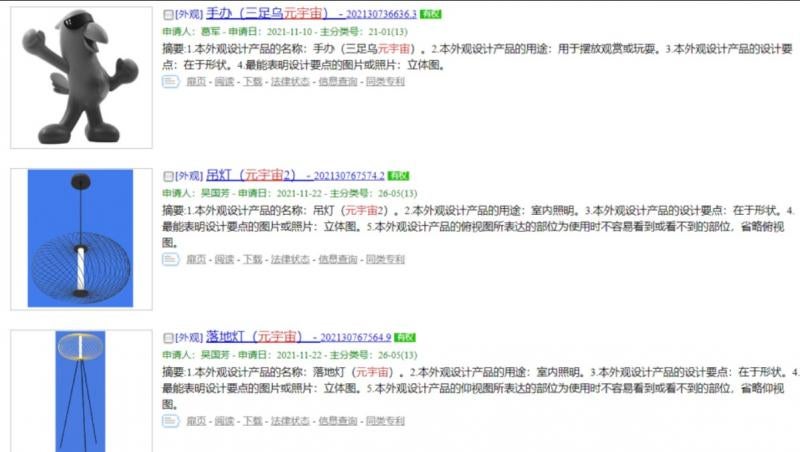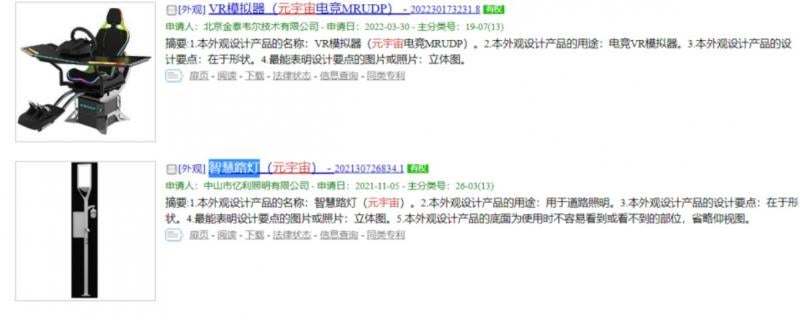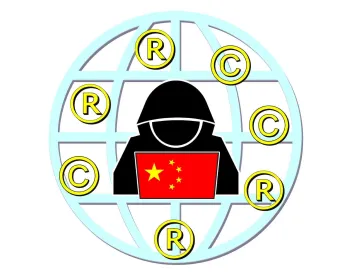The concept of Metaverse as an online framework for economic interoperability was born in and around 2020. Since then, giant companies all over the world ― especially in the IT, entertainment and fashion businesses ― have begun to launch products and solutions related to the ever developing Metaverse. Fashion brands, artists and entertainers, among others, have started focusing on producing digital work that is revolutionizing the way we perceive art, through the creation of NFTs and commodities. The latter, in particular, are assuming the form of non-physical goods that can be transacted and used in this totally immersive internet through Virtual Reality and Augmented Reality tools and devices, and many consumer brands are entering the Metaverse through gaming, social networks and virtual commerce.
In order to safely and effectively enjoy the economic benefits deriving from the use of their brands’ goodwill and product reputation in the Metaverse, businesses need to secure the appropriate IP rights. Fashion brands, for example, are filing trademark applications in the US, Japan and the EU to secure protection for the use of their brands on digital projections of their apparel, shoes and accessories that are transacted in the Metaverse. Other countries are lagging behind. China in particular, struggles in adapting and coping with the ever increasing need of both foreign and Chinese brands to obtain suitable trademark protection. The Chinese trademark system is in fact characterized by first-to-file and strict formalism in the selection and classification of goods and services. Without a formal update of the Chinese classification of goods and services that incorporates goods and service standards specifically aimed at the Metaverse, it is difficult for right holders to be able to create a trademark portfolio consistent with their global filings in the other major jurisdictions, where changes have already occurred to accommodate the needs surrounding the Metaverse. We have specifically covered this topic in a previous blog.
While trademarks protect the brands used in the metaverse and copyright protects NFTs as intellectual works, what about the protection of the shape, patterns and colors characterizing the non-physical commodities in the metaverse? Are they protectable by design patents? In this post we will analyze the availability of design patents for digital commodities and how it compares with other Asian countries like Japan, South Korea and Singapore.
Overview of current legislation in China
Article 2.4 of the Patent Law of the People’s Republic of China in its 2020 amended version defines design as a new design of the shape, pattern, or a combination thereof, as well as a combination of the color, shape, and pattern of the entirety or a portion of a product, which creates an aesthetic feeling and is fit for industrial application. The question is whether “product” that is “fit for industrial application” includes non-physical goods such as digital commodities conceived for use in the Metaverse as well.
While until recently there was a clear tendency by courts and academics to define “product” in the patent law as limited to physical goods, the 2019 “Patent Examination Guideline” appeared to breach this rather monolithic wall by giving protection to graphical user interfaces (GUIs), a non-physical product. In particular, Section 4.3 of Chapter III of Part I of the 2019 Patent Examination Guidelines specifies that “[p]roduct design refers to the design of product design elements including GUIs.” Although we may be tempted to immediately transfer this definition to non-physical Metaverses, the step is not so simple to take for a number of reasons.
A “physical product” is still needed to file an application
In China, a GUI alone cannot be registered as a design patent. Section 4.4.2 of Chapter III of Part I of the 2019 Patent Examination Guidelines requires the applicant of a design to submit at least one orthographic view of the display screen panel containing the GUI. Therefore, the only way to protect a GUI with a design patent is by filing it as part of a design application whose main object is, for example, a mobile phone. Therefore, at the end of it, China still requires a physical product to be at the center of the design patent application. Below is an example of a design patent filed for the “Graphical User Interface for Mobile Phones” (patent No.: 201930268118.6):

Chinese courts seem also to be still attached to the principle that “product fit for industrial application must ultimately be a physical product,” even in the case of GUIs. For example, in the administrative lawsuit related to the invalidation of the GUI design patent for Apple’s iphone in 2014, both the 1st and 2nd instance courts concluded that once separated from the specific industrial product, the GUI/pattern displayed after power-on does not belong to the scope of a design patent protection in China (中华人民共和国国家知识产权局专利复审委员会诉苹果公司外观设计专利申请驳回复审行政纠纷上诉案, (2014)高行(知)终字第2815号).
A goods classification is also needed to file an application
There is also another problem, that of classification. When filing a design patent in China, the applicant must indicate the class of products to which it belongs. Classification is important because it will define the scope of protection of the design in case of infringement and invalidation proceedings. Designs of different classes will not be “comparable” unless certain factors establish otherwise. China uses the Locarno Classification as a reference.
An example will help better understand this problem: In China there have been applications filed for “metaverse” focused designs. Some have been successfully registered, given that designs are only examined as to formalities. For example one application was filed for a “Smart Street Lamp (Metaverse)” (智慧路灯(元宇宙)), instead of directly naming it as metaverse street lamp. (The Locarno classification does not contain virtual non-physical designs of real products yet ―See Huang Bin, 构建元宇宙虚拟世界之虚拟现实法律问题探析). The applicant was obviously aware that using the words “metaverse” or “virtual” would have likely led to a rejection during the formal examination phase because Metaverse is not a standard classification. By using “Smart,” the application passed the formal test for registration.
It remains to be seen whether at the time of enforcement, such designs will be allowed to protect the use of the Street lamp in a game or Metaverse context. A “Smart” product is a data processing object, which has several interactive functions. A smart product combines the physical and software interfaces. However, the physical element is key to the definition of “Smart.” Therefore, we encounter the same problem as we have seen with GUIs.
Government Policies
Nonetheless, the Chinese government has already shown that it values the economic potential of virtual reality (VR) and the Metaverse. The Chinese government has in fact already adopted several polices to promote the VR industry in China since 2016. The 14th Five-Year Plan for National Economic and Social Development of the People’s Republic of China and Outline of the Vision for 2035 (中华人民共和国国民经济和社会发展第十四个五年规划和2035年远景目标纲要, issued in March 2021) lists virtual reality and augmented reality as one of the key industries in the digital economy.
Due to the complex administrative system regulating patent protection in China, we cannot expect a quick change to the whole system of design protection. However, the above mentioned policies seem to point in the right direction and change will likely come in the next few years. The problem however, remains. The race for protection of non-physical products by designs is on, but China is lagging behind other key Asian countries.
Reaction of Businesses to this Situation
Businesses are often pioneers of change. In spite of the statutory and jurisprudential uncertainties, it is worth noting that there are already quite a few design patents related to the metaverse filed and registered in China. In order to pass the formal examination and obtain registration, all these design applications were titled in a way so as not to emphasize the metaverse dimension (which was put in brackets as secondary description). Here are some example: “figure (Three-legged metaverse)”, “chandelier (metaverse 2)”, “VR Simulator (Metaverse Gaming MRUDP)”, “smart street light (metaverse)”:


The problem is that one cannot tell what the real scope of protection for these design will be. In particular, it is unknown whether they will be effectively enforceable against infringers who use these designs on non-physical products. If we follow the GUI example and the court decisions discussed above, it is likely that none of these designs can be enforced against a non-physical goods, like for instance when displayed through a pair of VR glasses.
This brings us to a final consideration: While GUIs may exhaust their aesthetic function once displayed on a screen, this may not be true for the metaverse. It may not be possible to obtain a meaningful design scope of protection if we limit the metaverse design protection to its shape and patterns/colors when displayed, at one given moment only, on the screen of the VR goggles. It is the belief of the authors that an analogous application of the GUIs design protection system to Metaverses is not practically desirable.
Responses of Other Asian Countries to this Issue
Singapore
Early in 2017, Singapore introduced “non-physical product” in the amended “Registered Designs Act 2000” (RDA). Section 5 of Division 2 of Part II of the RDA provides that a design that is new may, upon application by the person claiming to be the owner, be registered in respect of an article, a non‑physical product, or a set of articles and non‑physical products, as specified in the application. A “non-physical product” is defined as anything that: (i) does not have a physical form, (ii) is produced by the projection of a design on a surface or into a medium (including air), and (iii) has an intrinsic utilitarian function that is not merely to portray the appearance of the thing or to convey information. The Intellectual Property Office of Singapore (IPOS) also released several guidelines in further defining the non-physical product that is registrable as a design patent in Singapore. The application for a non-physical product will only have to contain a clear representation of the design, and it may have static or dynamic images. However, the schematic for a dynamic image design must not exceed 40 frames of view, unless otherwise approved by the specific examiner. Singapore has therefore adopted a very broad definition that does not require a connection of the digital design with a physical product (the air being the ultimate and broadest form of medium.
Japan
The Japan “Design Law” as amended in 2020, expanded the object of design patents to include images used for operating the device or those displayed as a result of the performance of the device, including a portion of the image. Graphic image design that is “industrially applicable” means that multiple identical graphic images can be created (corresponding to “manufactured” in the case of article design). However, the subject matter does not need to have industrially applicability in reality. Just having the potential is enough. When filing the design patent for an image, the Japan Patent Office requires the applicant to specify the usage of the images, e.g. image for information display, image for content viewing and operation, image for transaction. As to the representation of the image, the Japan Patent Office requires that in the case where the image design is flat, the use of “image diagram” indicates the image is subject to design registration. When the image is stereoscopic, the design registration is performed using the front view of the image, the plan view of the image, the left view of the image, and so on. The Japanese approach is similar to China’s design protection of GUIs, but at the end it detaches the image from the physical device. Therefore, to be valid and enforceable, a design in Japan does not need to be filed and connected to a VR device. The design description will allow the applicant to clarify exactly what the use and context of the design will be, thus defining its scope of protection.
Such approaches are for now impossible in China. Firstly, the Chinese are still sticking to the principle that a design product must be a physical one. Secondly, the Chinese patent law defines a design scope of protection based on the design itself, the description being used only to support the scope provided by the visual observation of the design.
The Outlook for Design Protection of Metaverses in China
While Japan and Singapore have introduced design patent protection for non-physical products, China does not yet offer right holders a clear and effective opportunity to do the same. This is a problem because the Metaverse race is on and the time to do so is now. Metaverses, once introduced into the market, will no longer be patentable as designs due to lack of novelty. China does not even have extended grace periods for early disclosures like in the EU and the USA. This means that to stay competitive in China, design right holders cannot wait for legislative or judicial changes and need to start building trademark and design portfolios at a global level today!
A design patent in China is far more easily enforceable than a copyright. Having a portfolio of design patents on Metaverses will secure the brand’s rights in a most effective manner. But because China does not provide for design patents on non-physical products, right holders have been creative and used the current law to obtain design patents that may offer some protection.
We do not know when China will make the needed change to its patent law or otherwise enable protection of digital products by design patents. The rapidly developing Metaverse and its related industries in China may be an indicator that the Chinese government might soon intervene to fill the gap. Nonetheless at present there is no immediate sign of a change. Right holders should therefore move now, because the race is on and the window of time to protect their designs will only become narrower.
Elisa Li contributed to this article.




 />i
/>i
